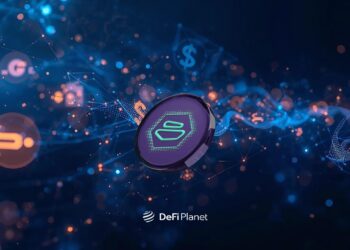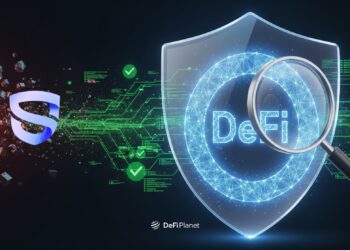Ethereum has long been the backbone of decentralized finance (DeFi), enabling a wave of innovation with smart contracts and permissionless trading. But as the ecosystem expands, Ethereum’s limitations, high fees, congestion, and scalability issues are holding back the next stage of DeFi growth.
That’s where Injective comes in. Founded in 2018 by Eric Chen and Albert Chon, Injective is purpose-built to power high-performance DeFi applications like decentralized derivatives, spot trading, and structured products. With near-zero fees, lightning-fast finality, and interoperability across major chains, Injective aims to solve the very issues slowing Ethereum down.
This review explores how Injective works, what makes it stand out from other DeFi blockchains, and whether it can truly scale decentralized finance to a global user base. Can Injective become the new engine driving DeFi’s next frontier? Let’s find out.
What is Injective and How Does it Work?
Injective is a next-gen Layer 1 blockchain built to supercharge DeFi. It’s designed to fix the biggest problems holding DeFi back, like slow speeds, high fees, and limited scalability.
What makes Injective stand out? It’s built specifically for financial use cases. It has zero gas fees for users, near-instant transaction times, and native support for advanced tools like derivatives and synthetic assets.
Whether it’s trading, lending, or building new financial products, Injective is built to make decentralized finance faster, cheaper, and more powerful.
How Injective Works
Injective is built using the Cosmos SDK and utilizes the Tendermint proof-of-stake consensus mechanism. This architecture enables the network to achieve instant transaction finality and process over 25,000 transactions per second, making it one of the fastest blockchains in the Cosmos ecosystem.
The combination of Tendermint’s consensus and the Cosmos SDK’s modularity allows Injective to develop custom modules tailored for financial applications.
A standout feature of Injective is its fully decentralized on-chain order book, implemented through the Injective Exchange Module. This module employs a Frequent Batch Auction (FBA) model, which aggregates orders over a specific interval and executes them simultaneously.
This approach mitigates front-running and ensures fair trade execution, providing a robust foundation for advanced trading applications such as derivatives and prediction markets.
Injective places a strong emphasis on interoperability. It supports the Inter-Blockchain Communication (IBC) protocol, allowing seamless asset transfers between IBC-enabled chains like Cosmos Hub and Osmosis.
Additionally, Injective integrates with Ethereum through the Peggy bridge and with other major blockchains such as Solana, Avalanche, and Polygon via the Wormhole protocol. This extensive cross-chain compatibility enables users and developers to interact with a diverse range of assets and ecosystems.
Injective incorporates CosmWasm, a smart contracting platform built for the Cosmos ecosystem. CosmWasm allows developers to write smart contracts in multiple programming languages, including Rust, and supports features like auto-execution at every block.
This capability enables the creation of complex, decentralized applications that can operate without manual intervention, enhancing efficiency and decentralization.
INJ Token and Governance
At the heart of Injective is the INJ token, a powerful utility and governance token that keeps the whole network running smoothly.
Like other Layer 1 blockchains that use Proof-of-Stake (PoS), Injective relies on token holders to help secure the network. You can stake INJ to become a validator or delegate it to one, and you’ll earn rewards for doing so.
What sets Injective apart is how it handles token rewards: instead of just handing them out endlessly, Injective uses an automated buy-back-and-burn system. That means it uses around 60% of transaction fees to buy INJ from the market and permanently destroy it, reducing supply and potentially increasing its value over time.
But INJ isn’t just for staking, it’s also your voting power. INJ holders can help steer the future of the platform by voting on key decisions like upgrades and protocol changes. These votes are handled through the Injective DAO, a decentralized community that runs the show.
On top of that, INJ can be used as collateral in Injective’s derivatives markets. Traders pay fees, and those fees are distributed to users who provide collateral, giving you another way to earn with your tokens. This model, made popular by platforms like GMX, is becoming a hot trend in decentralized finance.
Comparing Injective with Ethereum and Solana
Here’s a clear side-by-side comparison of Injective compared to Ethereum and Solana:
[Insert Image 1]
Injective’s Role in the Future of DeFi
Imagine a future where institutional investors, like big banks and hedge funds, use DeFi platforms for trading and other financial services. Injective could become the platform that makes that possible, thanks to its fast, scalable, and low-cost features.
It could even be seen as the “Bloomberg Terminal of DeFi” for institutions looking to trade advanced financial products like derivatives and synthetic assets in a decentralized way.
Institutional-Grade DeFi Apps
Injective stands out because it can support advanced, institutional-grade financial applications. Big institutions like banks need a platform that’s fast, secure, and can handle complex financial instruments. Injective provides all of that, with features like high-speed transaction finality (transactions are confirmed in seconds), low fees, and interoperability with Ethereum and Solana. This makes it easier for institutions to trade large volumes of assets on a decentralized platform.
Scalability: DeFi’s Path to Mass Adoption
As more people join DeFi and Total Value Locked (TVL) grows, scalability is becoming a major challenge. Ethereum, the most popular decentralized finance blockchain, faces high fees and slow transactions during peak times. Even with Layer 2 solutions (L2s) like Arbitrum or Optimism, these issues still exist because they rely on Ethereum’s main network.
Injective solves this problem by using its own Layer 1 blockchain built with the Cosmos SDK and Tendermint, which provides fast transactions and low fees without congestion. This means that as more people use DeFi and the industry grows, Injective can handle the increasing demand for faster and cheaper transactions, which is key to reaching mass adoption in DeFi.
How Injective Stacks Up Against Ethereum L2s and Other Appchains
When comparing Injective to Ethereum’s Layer 2 solutions and other appchains like dYdX and Sei Network, the big difference is in its design and focus. Ethereum L2 solutions improve scalability but still depend on Ethereum’s base layer, which can still face issues like high fees and slow processing.
Injective, on the other hand, is a Layer 1 blockchain, meaning it doesn’t rely on another blockchain. It’s built specifically for fast, scalable financial apps.
While platforms like dYdX and Sei Network also focus on advanced financial products like derivatives, Injective stands out because it’s fully decentralized and offers interoperability with multiple blockchains, including Ethereum and Solana.
This makes it easier to transfer assets and access a broader range of DeFi applications, which is important as decentralized finance continues to grow. Whether you’re an individual or an institution, Injective’s infrastructure has the potential to change how financial services are built and used in the decentralized world.
Challenges and Risks Ahead
Injective has a lot of potential in the DeFi space, but it also faces some big challenges and risks that could impact its growth.
[Insert Image 2]
1. Adoption Hurdle: Standing Out in a Crowded Market
The DeFi world is crowded with established players like Ethereum, Solana, and Binance Smart Chain. To stand out, Injective needs to offer some unique features.
Convincing people to leave the platforms they’re already familiar with and move to Injective can be tough. This is a challenge that many new blockchains face, especially when competing with well-known platforms.
2. Liquidity Fragmentation: Hard to Compete with Ethereum’s Deep Liquidity
For decentralized finance platforms, liquidity (the availability of assets for trading) is crucial. Ethereum has the largest pool of liquidity, but Injective is still building up its own.
While Injective can connect with other blockchains like Ethereum and Solana, it still faces the challenge of attracting enough liquidity providers to create a deep and stable market. Without enough liquidity, trading could become slow or costly, which could make users hesitate to join the platform.
3. Security Concerns: Risks with Cross-Chain Bridges and Smart Contracts
Injective uses cross-chain bridges to connect with other blockchains, but these bridges can be risky. Hackers often target them, and if there are vulnerabilities, it could lead to stolen funds or damaged trust in the platform.
Smart contracts are also crucial to Injective’s operations, but they can sometimes have bugs or security flaws that hackers might exploit. Even though Injective works hard to secure the platform, security risks are always present in decentralized systems.
4. Regulatory Pressure: Facing Increased Scrutiny from Governments
DeFi protocols that offer trading, like Injective, may face tougher regulations in the future, especially around things like KYC (Know Your Customer) and anti-money laundering rules.
If Injective doesn’t keep up with these regulations, it could face legal issues or even lose access to some markets. Balancing decentralization with global regulations will be important for Injective’s long-term success.
Is Injective a Quiet Giant in the Making?
Injective is quietly building a strong foundation that could position it as a major player in the next era of decentralized finance. With its finance-first Layer 1 infrastructure, seamless cross-chain interoperability, and near-zero fees, Injective is targeting the performance and scalability issues that have long held DeFi back.
In a crowded field, this focus could give Injective a meaningful edge. Still, the DeFi space moves fast, and being technically impressive doesn’t always guarantee success. Injective will need to overcome adoption challenges, liquidity competition, and regulatory scrutiny to stay in the race.
But if DeFi 1.0 was about trying new ideas, DeFi 2.0 is about making them work at scale, and Injective is betting big on being the platform that gets it right.
Disclaimer: This article is intended solely for informational purposes and should not be considered trading or investment advice. Nothing herein should be construed as financial, legal, or tax advice. Trading or investing in cryptocurrencies carries a considerable risk of financial loss. Always conduct due diligence.
If you would like to read more articles like this, visit DeFi Planet and follow us on Twitter, LinkedIn, Facebook, Instagram, and CoinMarketCap Community.
Take control of your crypto portfolio with MARKETS PRO, DeFi Planet’s suite of analytics tools.”





















